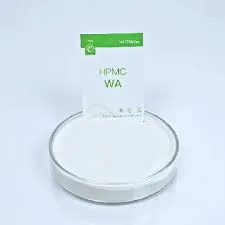
መስከ . 10, 2024 00:37 Back to list
hpmc for wall putty
HPMC for Wall Putty Enhancing Performance and Application
Hydroxypropyl Methylcellulose (HPMC) has gained significant attention in the construction industry, particularly as an essential additive in wall putty formulations. This versatile polymer is a key ingredient that elevates the properties of wall putty, making it more effective and user-friendly. Understanding the role of HPMC in wall putty helps in appreciating its benefits and applications in modern construction.
What is Wall Putty?
Wall putty is a white cement-based product used to create a smooth and even surface on walls before painting. Its primary functions include filling imperfections, providing a smooth finish, and enhancing the adhesion of paints. However, the performance of wall putty can greatly be improved by incorporating various additives, with HPMC being one of the most significant.
The Role of HPMC in Wall Putty
Hydroxypropyl Methylcellulose is a cellulose ether produced by the chemical modification of cellulose obtained from plant fibers. In wall putty, HPMC acts as a thickening agent, water-retaining agent, and film-forming agent. Its multifunctional properties make it ideal for enhancing various characteristics of wall putty.
1. Water Retention One of the critical properties of HPMC is its ability to retain water. This attribute helps in preventing the premature drying of wall putty, allowing for better workability and smoother finishes. Proper water retention ensures uniform curing and reduces the chances of cracks.
hpmc for wall putty

2. Improved Workability HPMC enhances the workability of wall putty, making it easier to apply. The added viscosity allows for better control during application, reducing the likelihood of drips and spills. This is particularly beneficial for both professionals and DIY enthusiasts, as it simplifies the application process.
3. Adhesion and Bonding The polymer’s film-forming capabilities improve adhesion between the wall putty and the substrate. A strong bond is crucial for the longevity of the finish and to prevent peeling or flaking of paint, even in adverse conditions.
4. Flexibility and Durability HPMC-modified wall putty exhibits enhanced flexibility, making it resistant to cracking and chipping. This is especially important in environments with fluctuating temperatures and humidity levels. The durability imparted by HPMC ensures that the wall putty maintains its integrity over time.
5. Environmental Benefits HPMC is a non-toxic substance that contributes to eco-friendly construction practices. With a growing emphasis on sustainable building materials, the use of HPMC in wall putty aligns with environmental goals.
Conclusion
Incorporating HPMC into wall putty formulations has transformed the way materials are engineered for construction. With its superior water retention, improved workability, and enhanced adhesion, HPMC not only facilitates the application process but also ensures a durable finish. As the construction industry continues to move towards more effective and sustainable solutions, the role of HPMC in wall putty will undoubtedly remain a pivotal focus. Adopting HPMC-enriched wall putty can lead to more resilient structures and ultimately, a better living environment.
-
Versatile Hpmc Uses in Different Industries
NewsJun.19,2025
-
Redispersible Powder's Role in Enhancing Durability of Construction Products
NewsJun.19,2025
-
Hydroxyethyl Cellulose Applications Driving Green Industrial Processes
NewsJun.19,2025
-
Exploring Different Redispersible Polymer Powder
NewsJun.19,2025
-
Choosing the Right Mortar Bonding Agent
NewsJun.19,2025
-
Applications and Significance of China Hpmc in Modern Industries
NewsJun.19,2025







